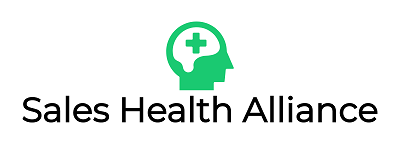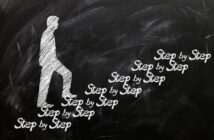I recently connected with Jeff Kahn who is the Co-Founder and CEO of Rise Science. Him and his team are doing some incredible work helping sales teams reach peak performance through better sleep. They graciously let me share one of their articles outlining the benefits napping provides within sales. Original article posted here.
Sales teams can achieve dreamy results when they nap at work—if they do it right.
In the world of sales, top performers are always on the hunt for fresh strategies and cutting-edge tech. And yet, one of the most beneficial—and overlooked—sales tools is as old as instinct. It costs nothing, needs no fancy equipment, and everyone on your team can try it out immediately.
It’s a nap.
Yes, we are, in fact, recommending that your team members sleep while at work, and a growing body of research agrees. By influencing memory, mood, and overall performance, the benefits of napping are linked to success at both basic and complex tasks—we’re talking everything from simple addition to intricate, high-stakes assignments. Read on to learn how workplace napping can strengthen your sales team, and how to implement it the right way. (Unfortunately, there is a wrong way to sleep on the job.)
The Specter of Sleep Debt
Whether they know it or not, your team’s sales abilities are probably hindered by sleep debt. Sleep debt is the amount of time you would need to sleep in order to catch up to your body’s natural demand. Think of it as the amount of sleep you “owe” yourself from the past 14 days. The more sleep debt you have, the more severe the consequences—not just for your health, but for your work productivity, too.
The obvious way to start paying back your sleep debt is to sleep more each night. But a proactive and profitable approach adds naps to the equation. Naps can chip away at sleep debt during the day, fostering more energized and capable employees.
When Sleep Goes Up, Sales Follow
Meeting your sleep need boosts your performance in almost every realm, but its benefits are especially relevant to sales professionals. That’s because sleep debt throws a particularly heavy wrench into the workings of the prefrontal cortex. This part of the brain handles the executive functioning skills you most want to see in your team: forethought, organization, self-control, focus … everything you need to show value and close the deal.
Shrinking your sleep debt brings those cognitive processes back online in quantifiable ways. Our research has shown that when salespeople become better sleepers, they raise monthly revenue by on average 14%, and up their outbound sales calls by 50%. We also know that when sales teams catch up on sleep, they’re more empathetic, more positive, and better leaders—all factors that contribute to business success.
Napping Research Has a Life-Saving History
Scientists have long been fascinated by the enormous impact sleep has on waking life. Naps are a part of this history of research, and occupy their own special subcategory of work-related sleep science.
Not surprisingly, nap research boomed when industrialization and night-shift work became global standards. People wanted to know how to avoid drowsiness on the job, especially when that job involved high risk, heavy machinery, or travel. According to Matthew Walker, the author of Why We Sleep, seminal research on airplane pilots in the 1980s and ’90s birthed the idea of the quick “power nap” as a preventative against fatigue (and, in this case, plane crashes). Later studies followed suit, examining naps as a reliable “fatigue countermeasure” that could literally save lives.
Nowadays, workers can channel this body of nap-knowledge to ensure both safety and productivity, whether they’re flying a jet or closing a deal.
Why We Nap
Before your head hits the pillow, consider what type of nap you’re about to take. There are actually three distinct categories of naps, sorted and named by prominent sleep scientists David Dinges and Roger Broughton, and you’ve probably sampled all of them without realizing it. Maybe you even have a go-to?
1. Replacement Napping: Naps to Make up Sleep Debt
As its name implies, you would take a replacement nap after loss of sleep, to repay outstanding sleep debt. And you wouldn’t be misguided: these naps do indeed lessen the ill effects of sleep deprivation. One study found that after only 4 hours of sleep the night before, participants felt markedly less sleepy and displayed more accurate logical reasoning once they had taken a 15-minute replacement nap. Another study had subjects nap for 10 minutes after a night of 4.7 hours of sleep. These subjects showed “immediate improvement in subjective alertness and cognitive performance,” which lasted at least a full hour beyond the nap.
2. Prophylactic Napping: Naps to Preempt Sleep Debt
Taking a prophylactic nap means you’re planning ahead for sleep loss. They’re a favorite of night-shift workers who want to bank their alertness for later in the evening. Again, research indicates that prophylactic napping is a smart move for those with “extreme” schedules. In a study of more than 1,000 police car drivers, researchers theorized that car accidents could be reduced by up to 48% when prophylactic naps were at play.
3. Appetitive Napping: Naps for Performance and Enjoyment
If you’re not sleep-deprived, you don’t anticipate being sleep-deprived, and you want to take a nap purely for the mental pick-me-up it provides, you’d take an appetitive nap. These naps are anything but frivolous—just by themselves, they can raise your alertness and cognitive function for almost 4 hours post-nap. A meta-analysis of years of sleep studies further concluded that “even for individuals who generally get the sleep they need on a nightly basis, napping may lead to considerable benefits in terms of mood, alertness, and cognitive performance.”
How Your Sales Team Can Benefit from Napping
Just like the benefits of well-maintained nightly sleep, the benefits of napping are multifaceted and far-reaching, affecting multiple areas of the brain. We’ve already hinted at how they can augment cognitive function, but that’s just scratching the surface. In the plainest terms, even a single short nap can change how you think, how you feel, and how you apply yourself at work. Here’s what your sales team can look forward to if they harness the power of a short snooze:
Better Memory
- The brain of an extremely tired person has a tendency to “turn off” its memory neurons. “Even though you’re awake,” says sleep expert James Maas, “your brain isn’t.” A nap can reverse the shut-down and allow those neurons to light back up, restoring memory function.
- Naps assist in declarative memory, which governs concrete information that you consciously retrieve (dates, names, facts, etc.). Even a nap as short as 6 minutes has been shown to improve a person’s recall of a list of words, suggesting that “the mere onset of sleep” can set memory consolidation in motion.
- Working memory also benefits from naps. This kind of memory permits multitasking—it allows you to pay attention to a broad task while incorporating memories to assist in that task. When you drive somewhere, for example, your working memory tells you where to turn as well as how to operate the car. In a NASA-funded study, David Dinges proved that naps notably improved working memory performance.
- Lastly, there’s procedural memory, which stores the motor skills you hone through practice until they can be performed unconsciously (think tying your shoes). Research shows that taking a nap boosts this type of memory, too: in one study, subjects who napped after learning a mirror-tracing task were significantly more skilled at the task during a second attempt than subjects who stayed awake between attempts.
Better Mood
- A 20-minute nap can up your confidence in yourself as you complete a task.
- Naps can increase your patience and self-control—research participants were able to tolerate frustration for longer after they had napped, and were also less likely to act impulsively.
- After a nap, people exhibit higher levels of relaxation and joy than they reported before the nap.
- Naps can combat the feeling and biological markers of stress caused by sleep deprivation. In a study of sleep-deprived subjects, scientists found that napping eliminated an increase in stress hormones on both the day after sleep loss and the next “recovery” day, compared to subjects who had not napped.
- Taking a nap can lower your subjective sense of drowsiness and fatigue—you’ll simply feel less exhausted!
- Naps could even have long-term effects on job satisfaction and your attitude. A year-long study of volunteer shift workers found that consistent napping led to sustained positive feelings about work and an improvement in “general quality of life.”
Better Performance
- Naps raise workers’ alertness in a variety of settings, from factories to hospitals to cockpits. NASA and the Federal Aviation Administration have conducted years of research on the benefits of naps for working pilots, and concluded that naps can increase alertness by 54%, resulting in notably improved psychomotor performance.
- On a similar note, studies show that night-shift workers become more vigilant after naps, resulting in more focus—not just at work, but on the drive home, too.
- Naps can enhance your ability to learn. For certain tasks, a nap might even be just as effective as a full night of sleep at solidifying a new perceptual skill in your brain.
- In conjunction with aiding in simple, immediate tasks like symbol recognition and addition, naps also bolster logical reasoning.
- If your nap is long enough to plunge you into REM sleep, it can improve creative problem solving abilities by 40%.
- Naps can even promote foresight and money-saving habits. A study of more than 400 low-income workers showed that adding naps to their regimen didn’t just raise overall work productivity—it also upped the amount of money that workers deposited in their savings accounts by 14%.
The Best Way to Nap at Work
Now that you’re familiar with the benefits of workplace napping, you’re probably wondering how to implement it. Unfortunately, it’s not as easy as telling your team that they can fall asleep on the office couch whenever they’d like. Your approach to napping needs to be informed, lest your team suffer from sleep inertia—that awful, fuzzy-headed state that can make you feel and perform substantially worse after a nap, not better.
To ensure that you reap maximum rewards from your naps, you’ll need to know the answers to the following key questions.
When should I nap?
The timing of your nap matters. Think back to the three types of nap: replacement, prophylactic, and appetitive. Based on your schedule, you might use a nap to regain sleep you’ve already lost the previous night, or as a preventative measure against future sleep loss. If you don’t have a ton of overall sleep debt but still want to benefit from naps, research suggests napping in the second half of the workweek, when you’re more likely to be experiencing a buildup of fatigue.
As for time of day, you’ll want to aim for what’s called your “postprandial dip.” You might already know this as your post-lunch dip—that time in the afternoon when your energy is at its lowest. Studies suggest that this is an ideal time for a nap, in that you fall asleep easier and can stay asleep longer during this window. If you’re low on sleep debt, however, you have a little more wiggle room. According to research, “sleep-satiated individuals” may want to wait until even later in the afternoon to nap for optimal results.
Also, don’t blame your sandwich for all of those midday yawns; it’s not just your lunch that prompts this daily “energy trough.” The slump is actually due to your natural circadian rhythm, and if you familiarize yourself with your cycle, you’ll be all the more equipped to plan for productivity peaks.
Where should I nap?
You don’t have to shell out $13,000 for an EnergyPod—a chair designed to facilitate workplace napping with music, vibrations, and usage tracking technology—but you shouldn’t neglect your nap environment. Seek out a dark, cool space, ideally between 65 and 68 degrees Fahrenheit, with minimal noise and distractions. Considering packing earplugs and a sleep mask in your briefcase. The closer you can get to feeling like you’re in a cave, the better.
How long should I nap?
This is a bit of a trick question, because the answer depends on what you want to get out of your nap. Looking for a burst of alertness, confidence, or to solidify some simple information in your memory? Then a quick power nap (at least 10 and up to 20 minutes) may be your best bet. A power nap implies that you wake up before you enter slow-wave sleep, thereby lessening the risk of sleep inertia.
Looking for a deeper swell of creativity, or a sustained lift in those higher-order cognitive functions, like planning and reasoning? Then you might want to block out a longer span of time for your nap, say, 40 minutes or more. At around an hour, you’re liable to enter REM sleep, which helps to bolster associative thinking and insight.
Longer naps also mean longer-lasting benefits. Research indicates that improvements in cognitive performance can last several hours if you commit to a nap more than 30 minutes long, whereas shorter naps yield benefits that fade after 1 to 3 hours.
But, there’s a trade-off: sleep inertia is more likely after one of the longer naps. Once you enter slow-wave sleep, the probability of sleep inertia rises with time. Additionally, you shouldn’t fly too close to the proverbial sun: a full sleep cycle lasts around 90 minutes, and if you exceed that in your nap, you could disrupt that night’s sleep.
Should I drink coffee before I nap?
It sounds counterintuitive, but drinking coffee just before you nap can actually elevate napping benefits to a new level. One study found that ingesting caffeine and taking a nap was the most effective tactic for decreasing subjective sleepiness and increasing performance on computer tasks—better than a nap followed by bright lights, a nap followed by face-washing, coffee by itself, or just the nap by itself!
This theory capitalizes on the fact that the effects of caffeine have a delayed onset: they peak within 15-120 minutes of ingestion. Therefore, the coffee doesn’t keep you from falling asleep, but instead kicks in at just the right moment to prevent sleep inertia upon waking (but be careful—caffeine can stay in your system for up to 10 hours, so doing this later in the day can potentially disrupt that night’s sleep).
Does a lot of napping make up for little nightly sleep?
If you’re severely sleep-deprived, a nap isn’t going to pull you back from that brink, and its benefits will probably be muted. Pursuing a consistent earlier bedtime remains the fastest and safest way to pay off the bulk of your sleep debt. Think of naps as a helpful supplement to your routine, not as a magical cure-all, and certainly not as a nightly-sleep substitute.
Am I napping in the way that’s best for me?
Finally, it’s worth keeping in mind that everyone’s ideal nap will be different. Some experimentation may be required before you settle on your perfect napping practice. Nap expert Sara Mednick recommends scaling your naps up by 15-minute increments until you find your “sweet spot.” Listen to your body, and keep track of which kinds of naps leave you feeling good, not groggy. Once you’ve found your nap niche, stick with it! The science suggests that regular naps have magnified benefits over sporadic ones.
If napping truly never works for you, don’t despair. Researchers are still investigating various possible chronotypes—basically, labels that depend on your biological preference for a certain time of day (e.g., morning people and night owls). Your chronotype may mean that you aren’t prone to midday napping, and that’s perfectly fine.
The Future: Napping as a Corporate Norm
Despite all of the benefits that a midday nap can bring, there’s still an unfortunate stigma around taking naps at work. Americans in particular have a history of championing sleep deprivation as a sign of drive, and decrying naps as a sign of laziness.
But as we’ve seen, evidence supports the opposite conclusion. When utilized correctly, naps can drastically increase work productivity and performance. It therefore makes more sense to associate them with motivation, intelligence, and prudence on behalf of your employees.
Thankfully, more and more businesses are embracing this truth, pointing to an ongoing cultural shift when it comes to workplace napping. Companies such as Nike, Google, and Ben & Jerry’s have added designated napping areas to their offices, and other businesses large and small are following suit. Researchers are also combating nap-negativity, pointing out that we should be more concerned about the costs of fatigue than the optics of napping.
The COVID-19 crisis has shown just how quickly corporate norms can flex to suit employee needs. As more of us work from home now than ever before, it’s a great time to investigate the many ways in which napping can benefit you and your sales team. And perhaps, once we emerge from the shadow of the pandemic, workplace naps will play an even bigger role in corporate America’s “new normal.”
Sleep better. Sell more.
Learn more about Rise for sales teams.
More than 2 in 5 salespeople struggle with their Mental Health. For more best practices to help you improve your sales performance through better Mental Health – check out the course below.
Online Course: Improve Sales Performance Through Better Mental Health





1 Comment
Pingback: How To Beat Decision Fatigue In Afternoon Meetings - Sales Health Alliance